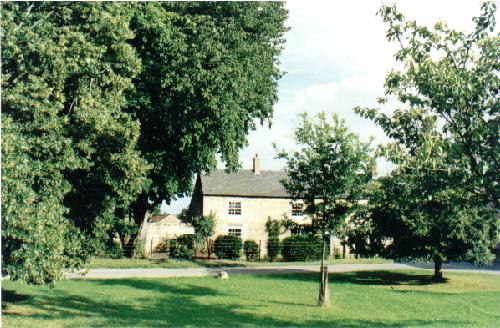|
- The villages around Bourne, Lincolnshire, England - |
Dyke

|
- The villages around Bourne, Lincolnshire, England - |

|
THE CAR DYKE built by the Romans and connecting Lincoln with Peterborough and beyond, runs through this village which is how it gets its name. Henry Penn, the famous 18th century bell-founder, cast one of the bells for Lincoln Cathedral at his foundry in Peterborough in 1717 and sent it to Lincoln on a raft, passing through this village. The bell, weighing just over 12 cwt, was transported at a cost of £8 13s. 0d (almost £1,000 at today's values), which indicates that the waterway was still navigable more than 1,500 years after it was built. The Penn bell is now the sixth in the ring of eight bells hanging in the south west (St Hugh's) tower of the Cathedral. One of the strangest buildings in Dyke is the village hall, originally a green zinc World War One army hut that was moved to Dyke from Belton Park, near Grantham in 1920. After the war, many of these military buildings were sold off or given away by the War Office and this one was acquired for use as a chapel at Dyke and was for many years known as St George’s Mission Hall where services, social events and meetings were held. In 1978, when its future came under review, a village hall committee was formed and since then almost the entire village has been involved in its running and upkeep, extending the floor space by an additional building at the rear to cope with an expanding population, and it has become the centre of social life for the community. The Wishing Well in the main street at Dyke is one of the most popular hostelries in the Bourne area, especially at weekends. This building is first referred to in local records in 1729 and became licensed premises in 1879 and was known until recently as The Crown. The kitchen was once a butcher's shop and the front facade retains a 17th century look with timbers angled in the Elizabethan way. Traces of thatching work carried out in 1734 still exist under tiles in one part of the roof and a bread oven was discovered purely by chance when a wall was removed during the last century and the cobwebs of 300 years swept away. The well of the inn name is six feet deep and once provided a touch of magic for the very young. In the 1970s, the small daughter of one regular visitor tossed a penny into the depths on every visit, closed her eyes and wished for a kitten, a wish that was eventually granted. The village green at Dyke, pictured above, is far too small to accommodate today's summer festivities that are now held on the nearby recreation ground, but it survives as a reminder of the way things were. This open space dates from mediaeval times and as the centre of a self-sufficient community, its main purpose was probably to enclose the village livestock that were impounded at night against predators, both wild and human. They survive in all shapes and sizes, some large enough for a game of cricket on a Sunday afternoon while others barely have room for a war memorial or a maypole, yet they are still the heart of the village and to know something of their origins is to understand more about their role in the history of the community they serve. An illustrated history of Dyke village and its
buildings can be
found on Return to HOME PAGE MAIN INDEX
|